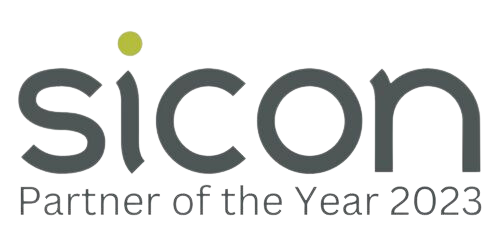Power Apps Training Course
| Presentation Style: | Tutor-led Classroom Training Course: On-Site at Your Office |
| Duration: | 1 Day |
| Course Time: | 09:30 - 16:30hrs |
| Course location: | Northampton |
| Cost: | Closed Courses: £1 200 + VAT for up to 12 delegates |
| Click a date to book: | Call 01604 655900 for available dates |
Building Applications with Canvas & Model-Driven Power Apps
Learning Objectives:
By the end of the course, participants will be able to:
- Understand the key differences between Canvas and Model-Driven apps
- Build a basic Canvas app connecting to external data sources
- Build a basic Model-Driven app leveraging Dataverse
- Know when to use Canvas apps vs Model-Driven apps based on business scenarios
Target Audience
Business users, app developers, and IT professionals with basic knowledge of Microsoft Power Platform and Office 365.
Prerequisites
- Basic understanding of Power Platform (Power Automate, Power Apps, Dataverse)
- Familiarity with Microsoft 365 and cloud-based data services (SharePoint, Excel, etc.)
Course Agenda
Module 1: Introduction to Power Apps
Overview of Power Platform:
- What is Power Apps?
- Understanding Low-Code/No-Code Development
- Introduction to Canvas and Model-Driven Apps
- Scenarios for using each type of app
Module 2: Getting Started with Canvas Apps
Canvas App Overview:
- What is a Canvas app?
- Use cases for Canvas apps
Building Your First Canvas App (Hands-on):
- Connecting to data sources (e.g., SharePoint, Excel, Dataverse)
- Creating a blank app and adding screens
- Using the drag-and-drop interface to design the app
- Adding basic controls (buttons, text boxes, galleries, etc.)
- Writing simple formulas to add logic (e.g., button click actions)
Module 3: Advanced Features of Canvas Apps
Exploring More Features:
- Designing multi-screen apps
- Working with different data sources simultaneously
- Managing app navigation and variables
- Introduction to app themes, formatting, and responsive design
Real-World Example:
- Build a simple app to track employee tasks or expenses
Module 4: Introduction to Model-Driven Apps
Model-Driven Apps Overview:
- What is a Model-Driven app?
- Use cases for Model-Driven apps
- Comparison with Canvas apps
Understanding Dataverse:
- Introduction to Dataverse as the data source for Model-Driven apps
- Key components: Tables, columns, relationships
Module 5: Building Your First Model-Driven App
Building a Basic Model-Driven App (Hands-on):
- Setting up tables and relationships in Dataverse
- Creating forms, views, and dashboards
- Automating processes with business rules and workflows
- Adding charts and visualisations
Real-World Example:
- Build a simple CRM-like app to manage customer data and sales leads
Module 6: Comparing Canvas and Model-Driven Apps
Key Differences:
- Flexibility vs. Structure
- Custom design vs. Prebuilt components
- Connecting multiple data sources vs. Working within Dataverse
When to Choose Canvas vs. Model-Driven Apps:
- Business scenarios
- Decision-making framework based on app requirements
Module 7: Final Project
Hands-on Project:
- Participants choose either a Canvas app or a Model-Driven app to build a solution for a specific business need (e.g., employee management, inventory tracking, service requests)
- Optional presentations of projects
Additional Information
- Joining instructions will be sent prior to attending the course
Course Dates
| Excel Advanced (Face-to-Face) | 04/11/2025 |
| Excel Intermediate (Face-to-Face) | 19/11/2025 |
| Microsoft Power BI (Face-to-Face) | 20/11/2025 |
| Empowering PowerPoint Advanced (Face-to-Face) | 25/11/2025 |
| Excel Introduction (Face-to-Face) | 02/12/2025 |
| Excel Intermediate (Face-to-Face) | 20/01/2026 |
| Excel Advanced (Face-to-Face) | 17/02/2026 |
| Excel Introduction (Face-to-Face) | 10/03/2026 |
| Excel Intermediate (Face-to-Face) | 21/04/2026 |
| Excel Advanced (Face-to-Face) | 21/05/2026 |
Free PDF Download
Sign-up to our mailing list and get a free Sneak Peek of our 'Excel Introduction' Training Course Manual:






